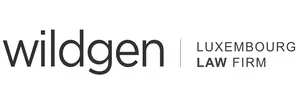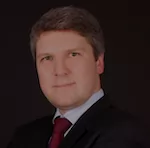During the second half-year of 2014, no less than five entities of the Luxembourg holding structure of the family controlled Banco Espirito Santo Group have had their fate in the hands of the judges of the Luxembourg District Court sitting in commercial matters located at the Plateau Saint-Esprit in Luxembourg-City and in the end, have all been declared bankrupt by the said Court.
The present article aims at providing a chronology of the relevant procedural steps from a Luxembourg viewpoint, after having rayed the structure in Luxembourg as it was operating prior its collapse.
Inside the Luxembourg holding structure of Banco Espirito Santo Group
Until the developments described hereafter, the Banco Espirito Santo conglomerate was considered as the second largest Portuguese banking private group by total reported net assets, being present in four continents and 25 countries and employing almost 10 000 people.1
As indicated before, five Luxembourg entities of the Banco Espirito Santo Group, considered as mainly constituting the holding structure of the core banking business of the said Group, have been declared bankrupt within the last six months.
While the cascading Luxembourg ownership structure, qualified as "convoluted" at some stage, has never been officially disclosed, it is considered as being topped by Espirito Santo Control S.A. ("ESC"), a Luxembourg public limited company founded in 1976.
Beneath ESC can be found Espirito Santo International S.A. ("ESI"), the second Luxembourg entity in bankruptcy, at the level of which material irregularities have been discovered that have been considered as the starting point of the collapse.
ESI is the sole shareholder of Rio Forte Investments S.A. ("Rio Forte"), the third bankrupt entity, holding a significant portfolio of assets by operating in real estate, tourism, agriculture, energy, health, and other business areas worldwide.
By vertical order, Espirito Santo Financial Group S.A. ("ESFG") is the fourth Luxembourg entity that has been declared bankrupt by the Luxembourg Court, and in which Rio Forte holds an indirect stake of approximately 49 percent. Moreover, ESFG owned around 25% in Banco Espirito Santo ("BES"), the Portuguese bank forming the core entity of the conglomerate that was split up, after a rescue package put together by the government and central bank, into a "good bank" (Novo Banco) holding sound assets and capitalised with state money, and a "bad bank" (BES) in which shareholders, holding ESFG, and junior bondholders were left with the toxic loans.
ESFIL – Espirito Santo Financière S.A. ("ESFIL"), a fully owned subsidiary of ESFG, is the fifth Luxembourg bankrupt entity of the Group. ESFIL is the sole shareholder of Banque Privée Espirito Santo S.A., the Swiss based banking entity of the Group, against which the Swiss regulator started bankruptcy proceedings in September 2014.
Chronology of the procedural steps in Luxembourg
| 18 July 2014: | application for controlled management filed by ESI |
| 22 July 2014: | ESI preliminary admission of the procedure of controlled management |
| 22 July 2014: | application for controlled management filed by Rio Forte |
| 24 July 2014: | application for controlled management filed by ESFG |
| 29 July 2014: | Rio Forte admitted to the procedure of controlled management |
| 29 July 2014: | ESFG preliminary admission of the procedure of controlled management |
| 31 July 2014: | application for controlled management filed by ESFIL |
| 5 August 2014: | ESFIL preliminary admission of the procedure of controlled management |
| 3 October 2014: | turning down of ESFG's application for controlled management |
| 3 October 2014: | turning down of ESFIL's application for controlled management |
| 10 October 2014: | ESFG declared bankrupt |
| 10 October 2014: | ESFIL declared bankrupt |
| 17 October 2014: | turning down of Rio Forte's application for controlled management |
| 17 October 2014: | turning down of ESI's application for controlled management |
| 27 October 2014: | ESI declared bankrupt |
| 5 November 2014: | ESC declared bankrupt |
| 3 December 2014: | turn down of the appeal lodged by Rio Forte |
| 8 December 2014: | Rio Forte declared bankrupt |
| 23 December 2014: | beginning of the claw-back period for ESI preponed to 22 January 2014 |
Some facts and information regarding the ongoing bankruptcy procedures
First of all, it can be noted that for the five respective entities, three different bankruptcy receivers have been appointed by the Luxembourg District Court sitting in commercial matters, namely: Maître Laurence Jacques as bankruptcy receiver for ESFG and ESFIL, Maître Alain Rukavina and Mr. Paul Laplume as bankruptcy receivers for ESI and Rio Forte and again Maître Alain Rukavina as bankruptcy receiver for ESC.
Their mission will mainly consist, under the controlling power of the Court, to realise the assets of the bankrupt companies and to pay off their debts to the largest extent possible.
In this regard, it can furthermore be noted that the bankruptcy receiver of ESFG filed two lawsuits with the Lisbon Administrative Court on 30 November 2014 by challenging, among others, the hive off of Novo Banco and the resolution of BES by Bank of Portugal. Comparable actions before the Lisbon Administrative Court have also been undertaken by several funds managed by large investment groups.2
Moreover, the Luxembourg bankruptcy receivers of Rio Forte, ESI and ESC have officially communicated to the respective creditors a deadline for the filing of their claims which will be the 31st of March 2015, whereas the bankruptcy receiver of ESFG and ESFIL simply stated that the date for filing of claims indicated in the relevant bankruptcy judgments is not a foreclosure date and that the latter will accept claims received thereafter.
Finally, it is not irrelevant to note that in the bankruptcy judgments of Rio Forte and ESI, the Luxembourg Court made use of the option given to it by law3 to set, as a precautionary measure, the starting point of the claw-back period, i.e. the fictional period during which the company will be deemed to have been insolvent and during which certain transactions may be subject to automatic or conditional nullity, 6 months prior to the date of admission to the procedure of controlled management (even though for ESI, it had to revise its initial judgment to do so).
Footnotes
1 Press Release IP/14/901 of the European Commission
2 Source : The Wall Street Journal Europe
3 Article 4 second paragraph of the Grand Ducal Decree of 24 May 1935 on controlled management
The content of this article is intended to provide a general guide to the subject matter. Specialist advice should be sought about your specific circumstances.


